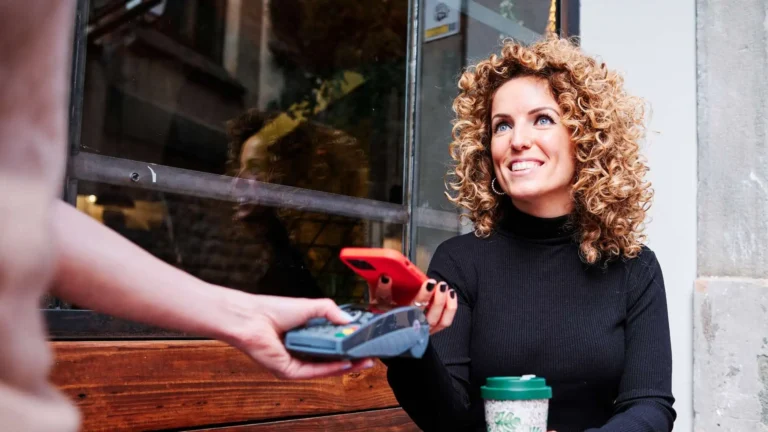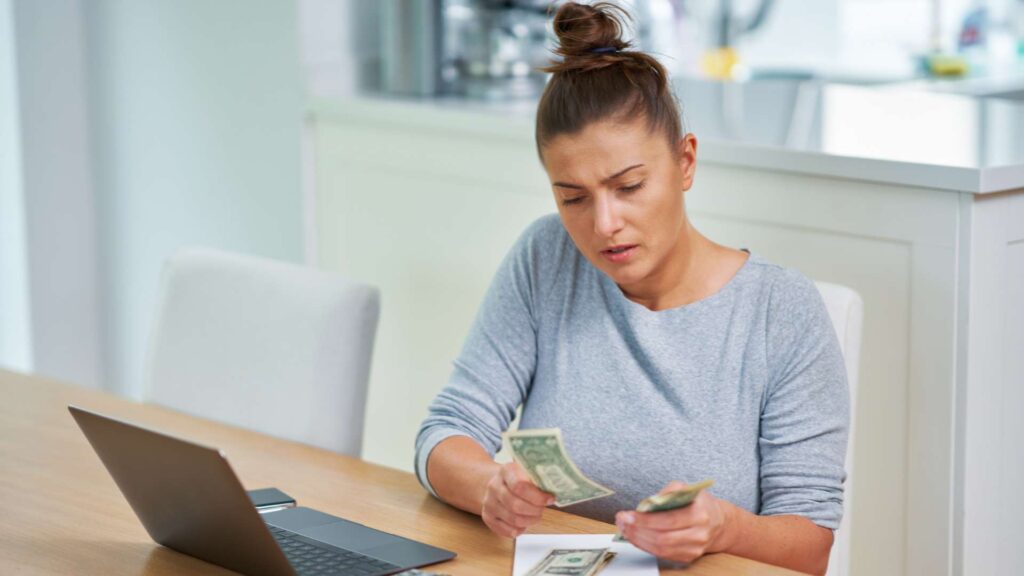Tipping used to be a gesture of appreciation—now it’s starting to feel like a mandatory line item on every receipt. Whether grabbing a coffee, using self-checkout, or picking up takeout, you’re likely facing a tip screen asking for 20% or more. As tip culture spreads across the U.S., many consumers are rethinking where their money is going—and how much of it is slipping away through guilt-driven gratuities. If tipping is quietly wrecking your budget, it’s time to take control.
Tip Screens Surround Us — And The Pressure Is On
As of 2025, tip culture pervades nearly every transaction. From your morning coffee to picking up a to-go salad, tipping culture has become so ingrained that tip screens flash percentages beginning at 20%, making us rethink even the most basic purchases.
The growth of mobile payment platforms has introduced an onslaught of pre-determined tipping levels, usually preceded by the anticipatory gaze of a cashier or barista. The outcome? An implied social expectation that has led many of us to overtake.
Expectations Have Shifted Since the Pandemic
The COVID-19 pandemic played a significant role in redefining tipping norms. Service industry workers became the heroes, and generous tipping was a means of solidarity. Something once a thoughtful gesture is now an expected norm. Fast forward to 2025, and that once generous 15% tip seems like the absolute minimum.
Why Tipping Fatigue Is a Growing Financial Stressor
Consumers are beginning to suffer from tipping fatigue. The relentless requests for gratuity, even in non-typical tipping situations such as self-checkout or retail, are causing many to feel overwhelmed.
This fatigue isn’t just emotional — it’s also financial. When every purchase requires an additional 20%, it quickly adds up, making small purchases budget breakers. Tipping might be the sneaky perpetrator if you’re questioning why your spending is out of control.
What’s the “Right” Amount to Tip These Days?
Traditional vs. Modern Tipping Standards (15% vs. 20% vs. 25%)
The “standard” tipping amount has evolved. While 15% was the go-to for years, 20% has become the new norm, with some platforms suggesting tips as high as 25% or more. This shift leaves consumers uncertain about what’s fair versus what’s expected. In reality, there’s no universal rule — it’s about balancing appreciation for service with your financial boundaries.
When It’s Okay to Say No to the Suggested Tip
Here’s a secret: You can say no. You’re not obligated to tip if you pick up a mobile order without additional service or interaction. Suggested tip prompts are just that — suggestions. You’re controlling when and how you tip — not the screen. If the service doesn’t warrant a tip, it’s perfectly okay to bypass it.
Everyday Situations and What to Tip in Each One
- Restaurants (full service): 18-20% is standard for sit-down meals. More for exceptional service.
- Cafés and coffee shops: $1-$2 or 10-15%, especially if there’s a custom drink or friendly service.
- Delivery drivers: 15-20%, plus extra for large orders or bad weather.
- Rideshare: $1-$5 depending on distance and experience.
- Takeout: Optional, but 10% for complex or large orders.
- Baristas: $1 for regular orders; more if they remember your name or custom preferences.
Read related blogs: 7-Day Spending Audit: Reset Your Wallet
Where Are You Most Likely Overspending on Tips?
Automated Checkout Terminals With Default High Tips
Self-checkout kiosks and mobile apps often come with pre-set tip suggestions. These machines don’t offer personal service, yet they prompt for a 20-25% tip. This can feel disingenuous, and it’s a common spot for overspending. If there’s no added human effort, it’s okay to choose “No tip.”
Double-Tipping Situations
Some services charge a delivery fee (which often doesn’t go to the driver) and still prompt for a tip. The fee often goes to the company, not the driver, but this double charge can be misleading. Before tipping, check if the worker benefits from the delivery fee. If not, tip accordingly—but be mindful not to overdo it.
When Tipping Feels Mandatory — Even for Non-Service Tasks
Have you ever tipped someone for handing you a pre-packaged item or scanning a barcode? You’re not alone. More businesses are adding tip requests for tasks that traditionally didn’t involve service. These add up, and it’s okay to draw the line. Gratitude doesn’t have to be automatic, especially when no service is provided.
Who Should You Be Tipping?
Workers Who Rely on Tips to Supplement Wages
Some workers, like restaurant servers and delivery drivers, depend on tips to earn a livable wage. In these situations, tipping isn’t just appreciated — it’s necessary. Supporting these workers through fair tips helps compensate for an often broken wage system.
A new bipartisan Senate bill (No Tax on Tips Act) — passed unanimously in May 2025 — would allow up to $25,000 in tip income to be deducted from taxable income starting in the tax year 2025, with potential savings of around $1,675 per tipped worker.
Situations Where Service Truly Adds Value
When a worker goes above and beyond — remembering your name, offering helpful suggestions, or providing exceptional service — tipping is a way to acknowledge that effort. These are the moments when gratuity truly feels meaningful and deserved.
Industries Where Tipping Is Optional, Not Expected
Retail clerks and grocery baggers typically don’t expect tips, especially in self-service environments. These jobs are typically salaried or hourly without tip dependency. Don’t feel obligated to tip in these scenarios unless there’s an extraordinary level of personal assistance.
See Also: How Much Should I Pay for Internet? Manage Your Bills with Beem
How to Tip Fairly Without Breaking Your Budget
Set a Monthly “Tipping Cap” as Part of Your Spending Plan
Build a designated tipping allowance into your budget to avoid overspending on tips. Based on your income and lifestyle, decide on an amount that works for you—$30, $50, or $100 monthly.
Use a simple spreadsheet or a budgeting app to track your tipping habits and stay within your limits. This small change can help you feel more empowered and less guilty when making tipping decisions, knowing you’ve already accounted for it financially.
Keep Small Bills or Set App Limits for Cashless Tips
Carrying a few $1 or $5 bills in your wallet lets you tip precisely what you want — no more awkwardly punching in 25% at a touchscreen when all you ordered was a drip coffee. Many payment apps (Venmo, PayPal, or Square) offer ways to set custom tip percentages or maximums for digital tipping.
Take a few minutes to adjust your default settings to reflect what you’re truly comfortable giving—not what’s being suggested. That way, you’ll make mindful choices rather than reacting under pressure.
Create a simple “gratitude scale” — tip more when service truly goes above and beyond
Instead of defaulting to whatever the screen suggests, develop a “gratitude scale” for your tipping. Ask yourself: Did the person go out of their way to provide thoughtful, friendly, or quick service? Was the experience personal or above the norm?
If so, that might warrant a higher tip. If the service was average or minimal, it’s okay to stick to your baseline — or even opt out altogether. Let the level of service guide the amount, and treat tipping as a tool for appreciation, not obligation.
What to Do If You’re Feeling Tip Guilt or Peer Pressure
It’s Okay to Adjust the Tip Based on Your Budget
Everyone’s financial situation is different. If you’re on a tight budget, tip what you can. A $1 tip is better than nothing, and it’s reducing the amount that is okay when needed. Don’t feel obligated to meet the screen’s suggestion if it’s beyond your means.
Scripts for Saying “No Thanks” Politely When Needed
If someone asks directly for a tip and you’re not comfortable, try a polite and straightforward decline:
- “Not today, thank you.”
- “I’m on a tight budget, but I appreciate your help.”
- “I’ll catch you next time.” Setting boundaries doesn’t make you unkind — it makes you financially responsible.
Tip with Intent, Not Obligation — It Should Feel Good, Not Forced
At its core, tipping should be a gesture of appreciation. When you feel forced, it loses its meaning. Tip when it feels right, not because you feel guilted into it. Reframe tipping as a choice, not a requirement.
Final Thoughts: Is Tipping Culture Making You Overspend
Tipping is about gratitude, not guilt. It’s a personal gesture, not a transactional obligation. In 2025, where tip screens are everywhere, and social pressure is high, taking back control is essential.
Don’t let default settings or guilt-tripping prompts dictate how generous you are. Reclaim the ability to tip on your terms — based on the service you receive, your budget, and your comfort level. You can still express appreciation without going overboard.
Being mindful of your money doesn’t make you stingy — it makes you responsible. Tip smartly, thoughtfully, and with purpose. Make it count when it truly matters. Try Beem’s free Budget Planner, which helps you track spending, including tips, so you stay in control. Set custom limits, view where your money goes, and make informed decisions — whether you’re dining out or grabbing a coffee. With Beem, you can create a personalized monthly tipping cap and avoid surprise overspending — all while staying aligned with your financial goals.
You can be generous without going broke. Tip smart, and let it reflect your values, not societal pressure. Control the habit — don’t let it control your wallet.















































